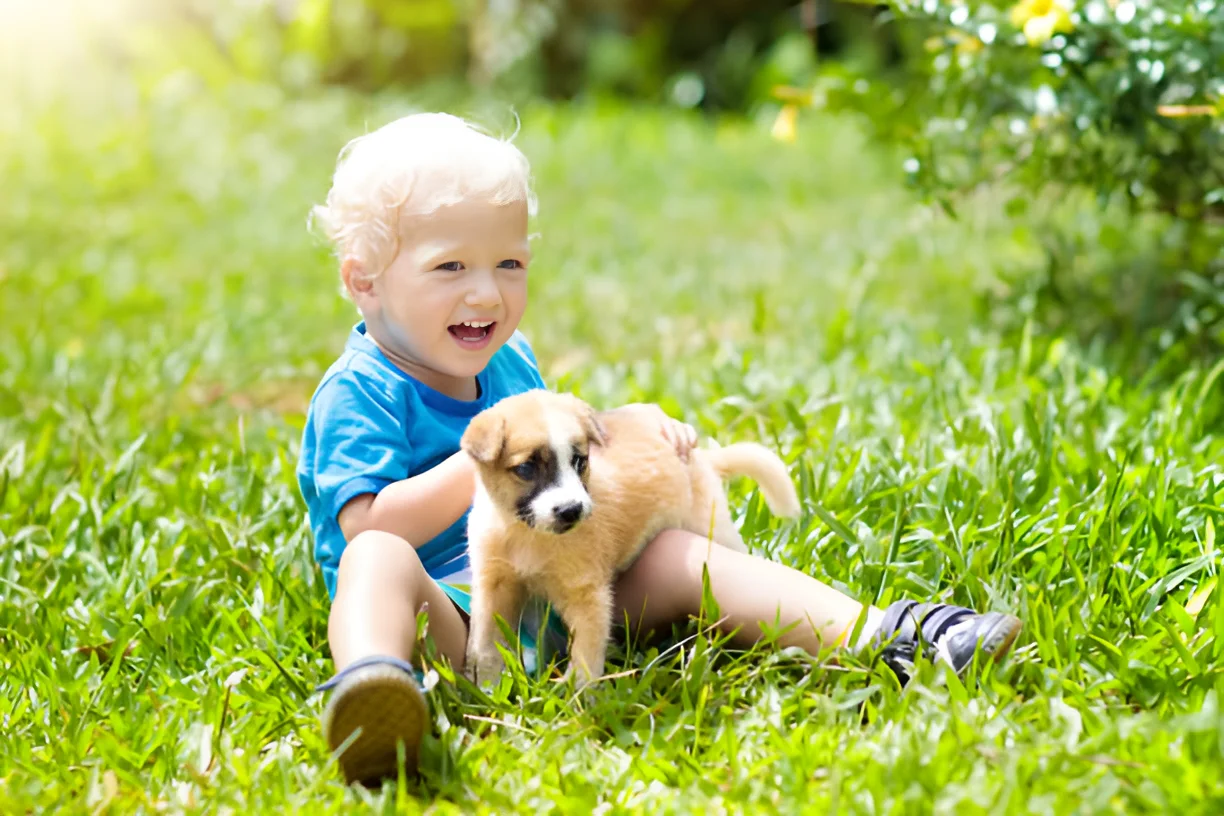Yes, babies do think puppies are cute, and this response is rooted in both evolutionary biology and psychological development. The bond between humans and animals, especially between babies and puppies, is a fascinating subject that combines elements of psychology, biology, and social behavior. This comprehensive guide will explore why babies find puppies cute, the scientific basis behind this perception, and the benefits of this interaction for both babies and puppies.
The Science of Cuteness
Evolutionary Biology and “Kindchenschema”
The concept of “kindchenschema,” or “baby schema,” was introduced by ethologist Konrad Lorenz in the 1940s. This theory suggests that certain physical features, such as large eyes, a round face, and a small nose, trigger an innate caregiving response in humans. These features are common in both human babies and young animals, including puppies, making them universally perceived as cute.
Brain Response to Cuteness
Studies using functional magnetic resonance imaging (fMRI) have shown that when humans, including babies, see cute images of babies or puppies, the same areas of the brain associated with empathy and caregiving light up. This response is not limited to adults; even very young children exhibit a preference for baby-like features and show a desire to nurture and care for them.
Psychological Development and Attraction to Puppies
Early Socialization and Emotional Development
From a young age, babies are naturally drawn to faces and social interactions. This attraction extends to animals, particularly those with baby-like features. Interacting with puppies can enhance a baby’s socialization skills and emotional development. The presence of a puppy can evoke feelings of joy, curiosity, and empathy in babies, contributing to their overall emotional growth.
Visual and Sensory Stimulation
Puppies provide a rich source of visual and sensory stimulation for babies. The movement, sounds, and textures associated with puppies can captivate a baby’s attention and encourage exploration. This sensory engagement is crucial for cognitive development and helps babies learn about their environment.
Benefits of Baby-Puppy Interaction
Emotional and Social Benefits
The interaction between babies and puppies can have numerous emotional and social benefits. These include:
- Increased Empathy: Caring for and interacting with a puppy can teach babies empathy and compassion.
- Reduced Stress: The presence of a puppy can have a calming effect on babies, reducing stress and anxiety.
- Enhanced Bonding: Shared experiences with a puppy can strengthen the bond between babies and their caregivers.
Physical Benefits
Physical interaction with puppies can also provide several physical benefits for babies, such as:
- Improved Motor Skills: Crawling, reaching, and playing with a puppy can enhance a baby’s motor skills and coordination.
- Increased Physical Activity: Engaging with a puppy encourages babies to be more active, promoting physical health.
Ensuring Safe Interactions
Supervision and Safety Measures
While the interaction between babies and puppies can be beneficial, it is essential to ensure that these interactions are safe. Always supervise interactions to prevent accidental injuries. Teach puppies to be gentle and avoid rough play. Ensure that the environment is safe and free from hazards.
Gradual Introduction
Introduce babies and puppies gradually to ensure a positive experience for both. Allow the puppy to become familiar with the baby’s scent and presence before direct interaction. Use positive reinforcement to encourage gentle behavior from the puppy.
Hygiene and Health Considerations
Maintain good hygiene practices to ensure the health and safety of both babies and puppies. Regularly clean the areas where they interact and ensure that the puppy is up-to-date on vaccinations and parasite control.
Conclusion
Babies do think puppies are cute, and this response is rooted in both evolutionary biology and psychological development. The interaction between babies and puppies can provide numerous emotional, social, and physical benefits, contributing to the overall well-being of both. By ensuring safe and supervised interactions, parents can foster a positive relationship between their babies and puppies, enhancing their development and creating lasting bonds.
The photo featured below the post headline is Credit: FamVeld/istockphoto
I hope you find this post helpful and informative. If Yes’ feel free to share it with your friends!
Frequently Asked Questions
Why do babies find puppies cute?
Babies find puppies cute due to the “kindchenschema” or “baby schema,” which includes features like large eyes and round faces that trigger an innate caregiving response.
How can interacting with puppies benefit a baby’s development?
Interacting with puppies can enhance a baby’s socialization skills, emotional development, motor skills, and physical activity levels.
What safety measures should be taken when babies interact with puppies?
Always supervise interactions, teach puppies to be gentle, ensure a safe environment, and maintain good hygiene practices.
Can puppies help reduce stress in babies?
Yes, the presence of a puppy can have a calming effect on babies, reducing stress and anxiety.
How should babies and puppies be introduced to each other?
Introduce them gradually, allowing the puppy to become familiar with the baby’s scent and presence before direct interaction. Use positive reinforcement to encourage gentle behavior.

